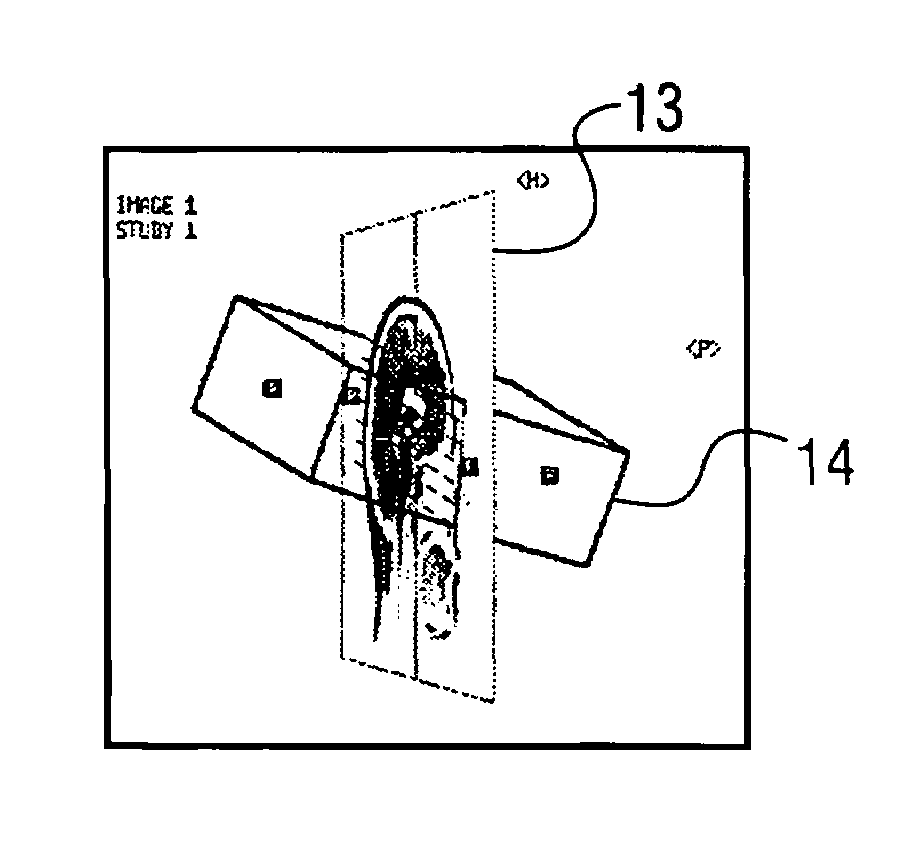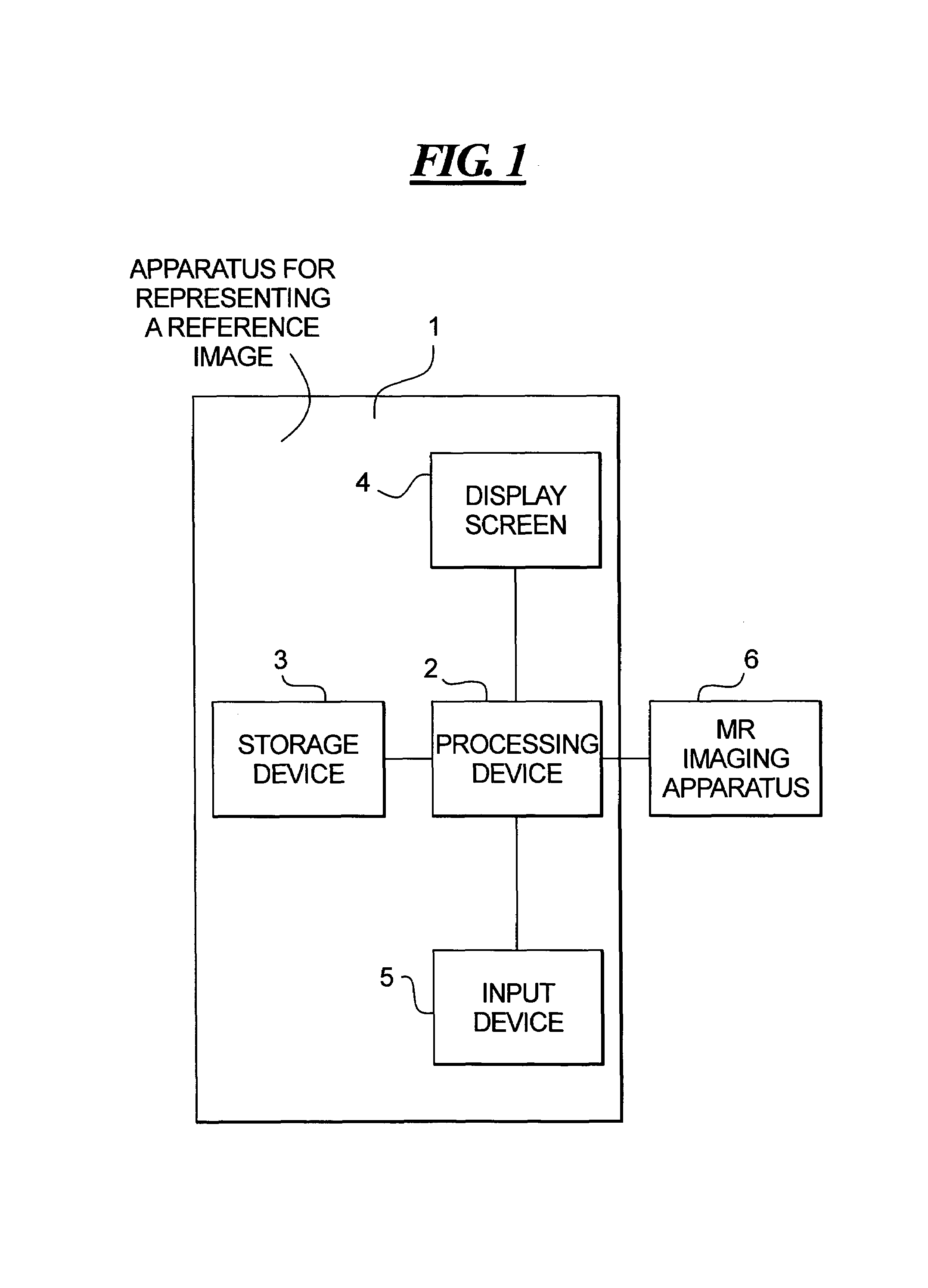Apparatus for reference image rotation, and computer software product and method for reference image rotation
a technology of reference image and computer software, applied in the direction of diagnostic recording/measuring, instruments, applications, etc., can solve the problems of difficult even for experienced users to correctly interpret the actual position of slices using the depicted sectional, and the sign rule for determining the direction of rotation, i.e. positive or negative, is very complicated, and achieves the effect of improving display
- Summary
- Abstract
- Description
- Claims
- Application Information
AI Technical Summary
Benefits of technology
Problems solved by technology
Method used
Image
Examples
Embodiment Construction
[0021]FIG. 1 is a schematic illustration of an apparatus 1 according to the invention for representing reference images of patients and slices to be measured in a displayed reference image for assisting the positioning of slices in preparation of a slice-by-slice measurement, for example by means of a magnetic resonance imaging apparatus 6. The apparatus 1 according to the invention is, for example, a data processing apparatus, such as a computer or the like, and comprises a processing device 2, a storage device 3, a screen 4 and an input device 5. Of course the apparatus 1 according to the invention has all further elements required for proper operation, such as e.g. clock generator, power supply, etc, however, these are not crucial for the functions according to the invention, and therefore are not represented for clarity.
[0022]The apparatus 1 according to the invention serves for displaying reference images and slice groups in order to prepare for an examination of a patient in a...
PUM
 Login to View More
Login to View More Abstract
Description
Claims
Application Information
 Login to View More
Login to View More - R&D
- Intellectual Property
- Life Sciences
- Materials
- Tech Scout
- Unparalleled Data Quality
- Higher Quality Content
- 60% Fewer Hallucinations
Browse by: Latest US Patents, China's latest patents, Technical Efficacy Thesaurus, Application Domain, Technology Topic, Popular Technical Reports.
© 2025 PatSnap. All rights reserved.Legal|Privacy policy|Modern Slavery Act Transparency Statement|Sitemap|About US| Contact US: help@patsnap.com



